Typologies are a useful tool for photographers to use for visual classification in both a stoic and detached manner (Hilla and Bernd Becher-industrial architecture) or creatively (Steve Tyler-Typologies of Mass Consumption)
Key elements of typologies include:
- Uniformity of presentation
- Ability to see similarities as well as differences
- Provide historical record (August Sander / Bechers)
- Exercise of attribution within a category
- re-present archives (Arwed Messmer und Annett Gröschner)
plural noun: typologies
1.a classification according to general type, especially in archaeology, psychology, or the social sciences.
“a typology of Saxon cremation vessels”
study or analysis using a classification according to a general type.
2.the study and interpretation of types and symbols, originally especially in the Bible.
https://www.google.com/search?q=typologies+definition&oq=typologies+definition&aqs=chrome..69i57j0i22i30l2j0i15i22i30l2j0i22i30l5.5964j1j7&sourceid=chrome&ie=UTF-8Britannica Dictionary definition of TYPOLOGY. [count, noncount] formal. : a system used for putting things into groups according to how they are similar : the study of how things can be divided into different types. (https://www.britannica.com/dictionary/typology)
‘Photography has been employed as tool for visual classification. The camera’s ability to make an accurate record of particular visual phenomena has meant that artists and photographers, seeking to make a systematic document of aspects of the world, have been repeatedly drawn to photography. In their hands, the camera has been used as a tool for witnessing and classifying types of subjects – people, buildings, objects etc. – gathering this evidence together in one place (often a book or exhibition) so that the viewer is able to see and assess it. This approach to photography is sometimes referred to as typological, a typology being a study or interpretation of types of things.’ Source: https://www.photopedagogy.com/typologies.html
‘Throughout the modern era, photography has been enlisted to classify the world and its people. Driven by a belief in the scientific objectivity of photographic evidence, the logics utilized to classify photographs-in groups and categories or sequences of identically organized images-also shape our visual consciousness. In the twenty-first-century, new digital technologies and globalization have radically transformed the applications of photography, making the reconsideration of photographic information systems ever more urgent.’
— from The Order of Things, an exhibition at the Walther Collection, 2015
Some notable artists/photographers/practitioners
Arwed Messmer
Arwed Messmer (born 1964) is a German photographer and artist, based in Berlin. His work primarily uses recontextualised vernacular photographs of recent historical events, found in German state archives, in order to pose questions about photography He mainly produces books of this work, often with Annett Gröschner on the time of a divided Germany, but also exhibits it.
Messmer won the Otto Steinert Prize from the German Society for Photography in 1996, was co-winner (with Gröschner) of a DAM Architectural Book Award in 2011 and 2012, and was shortlisted for the Deutsche Börse Photography Foundation Prize in 2018.Wikipidia
Part of the series Taking Stock of Power: An Other View of the Berlin Wall typologies created from East German archives.
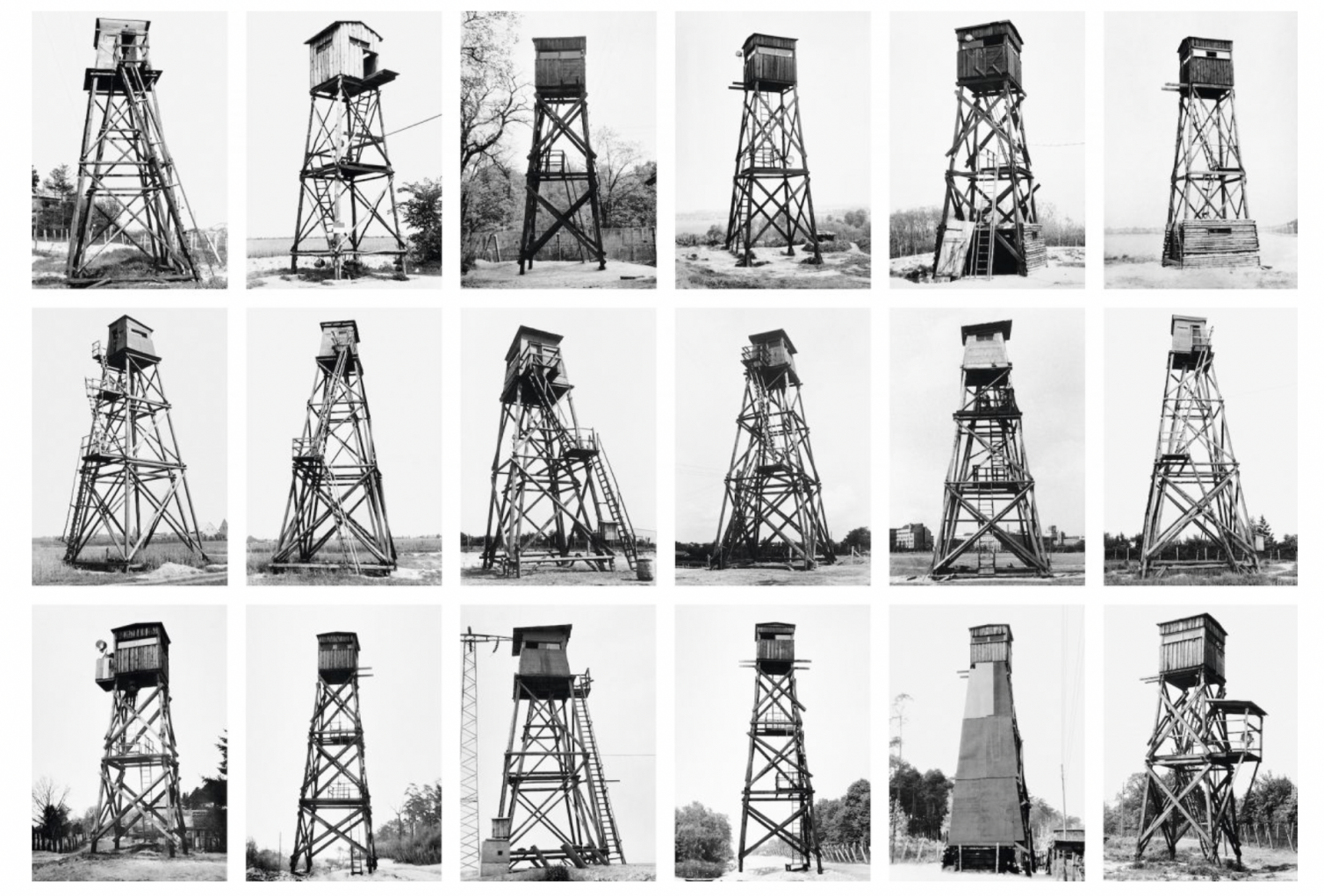
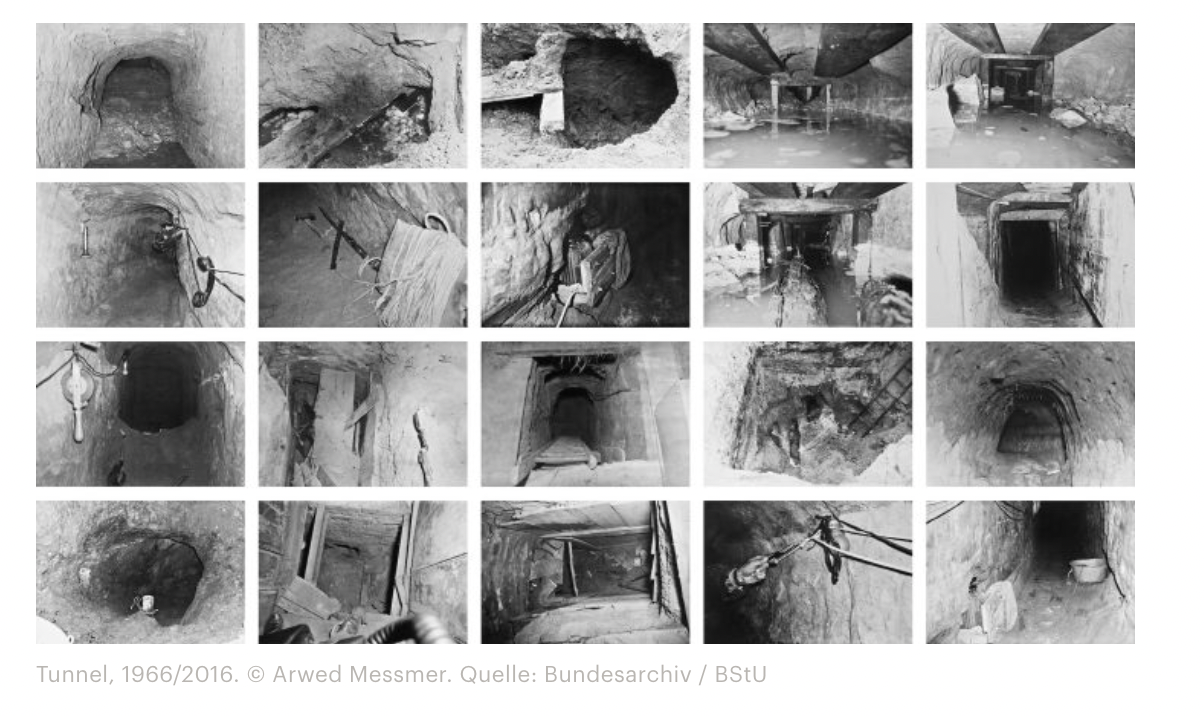
Douglas Huebler Variable Piece #101
Huebler asked Becher to pose in the following order to depict these types: “a priest, a criminal, a lover, an old man, a policeman, an artists, Bernd Becher, a philosopher, a spy and a nice guy”
After a few months had passed Huebler sent a differently ordered list and copies of the prints in no particular order to Becher and asked him to match the prints with the captions. Becher’s returned list came back as: “1. Bernd Becher; 2. Nice Guy; 3. Spy; 4. Old Man; 5. Artist; 6. Policeman; 7. Priest; 8. Philosopher; 9. Criminal; 10. Lover” (Hughes, 2007).
Huebler took 10 portraits of the photographer Bernd Becher (himself a noted
typologist) showing a sequence of deliberate poses Becher was asked to perform
(priest, criminal, lover, old man, policeman, artist, Bernd Becher, philosopher,
spy, nice guy).
A few months after the portraits had been taken, Huebler forwarded them to
Becher and asked him to make the correct associations. The two different
sequences are then presented to the viewer, the captions determined first by the
photographer (Huebler) and second by the subject (Becher). Where these images
are presented will determine what order they will be seen in. This typology of the
typologist (Becher) therefore uses the photographic caption (normally used in a
supportive role) deliberately to create confusion when reading the work.
Bernd and Hilla Becher – Typologies of industrial architecture
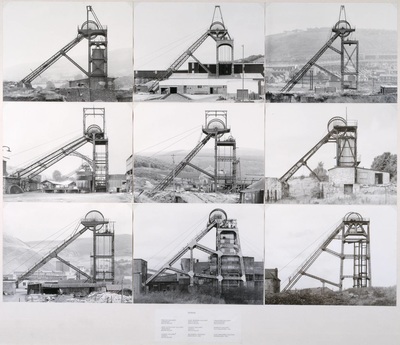
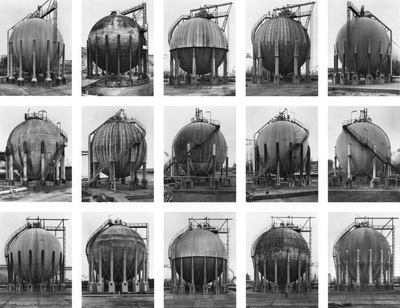
Hilla Becher was a German artist born in 1931 in Siegen, Germany. She was one half of a photography duo with her husband Bernd Becher. For forty years, they photographed disappearing industrial architecture around Europe and North America.
They photographed Industrial structures including water towers, coal bunkers, gas tanks and factories. Their work had a documentary style as their images were always taken in black and white. Their photographs never included people.
They exhibited their work in sets or typologies, grouping of several photographs of the same type of structure. The are well known for presenting their images in grid formations.
Legacy:They were often labelled as conceptual artists and influenced minimalist and conceptual artists like Ed Ruscha, Carl Andre and Douglas Huebler.
As professors of The Dusseldorf School of Photography, they influenced a generation of German photographers who were their students (including Andreas Gursky, Candida Höfer, Thomas Ruff and Thomas Struth.)
SOURCE TATE: https://www.tate.org.uk/art/artists/bernd-becher-and-hilla-becher-718/who-are-bechers
Boris Mikhailov
German PortraitsBoris Andreyevich Mikhailov or Borys Andriyovych Mykhailov is a Soviet and Ukrainian photographer. He has been described as “one of the most important artists to have emerged from the former USSR.” Mykhailov has been awarded the Hasselblad Award and the Citibank Private Bank Photography Prize. Wikipedia
 Nearly a century after August Sander’s portraits of German society, the Ukrainian photographer Boris Mikhailov created a series of pictures of the amateur actors in a German theatre company in the town of Braunschweig. Shot in profile against a black background, the photographer makes reference not only to Sander’s typol0gical study but also to Theodor Piderit’s Principles of Mimic and Physiognomy, published in Braunschweig in 1858 and also to Hitler’s interest in eugenics; Hitler became a German citizen in Braunschweig in 1932. The profile portrait also encourages the viewer to make formal comparisons between the sitters. Mikhailov’s portraits and those of August Sander were exhibited together in 2012. https://www.photopedagogy.com/typologies.html
Nearly a century after August Sander’s portraits of German society, the Ukrainian photographer Boris Mikhailov created a series of pictures of the amateur actors in a German theatre company in the town of Braunschweig. Shot in profile against a black background, the photographer makes reference not only to Sander’s typol0gical study but also to Theodor Piderit’s Principles of Mimic and Physiognomy, published in Braunschweig in 1858 and also to Hitler’s interest in eugenics; Hitler became a German citizen in Braunschweig in 1932. The profile portrait also encourages the viewer to make formal comparisons between the sitters. Mikhailov’s portraits and those of August Sander were exhibited together in 2012. https://www.photopedagogy.com/typologies.html
https://www.nytimes.com/2022/10/28/arts/design/boris-mikhailov.html
Ed Ruscha
Edward Joseph Ruscha IV is an American artist associated with the pop art movement. He has worked in the media of painting, printmaking, drawing, photography and film. He is also noted for creating several artist’s books. His works is often associated with the Pop Art movement. Wikipedia
Ed Ruscha’s first book Twentysix Gasoline Stations 1962 featured photographs he took as he travelled along Route 66, between Los Angeles and his parents’ home in Oklahoma City, taking in Arizona, New Mexico and Texas. The pictures, which have no people in them, do not document a particular journey and there is no sense of narrative or story. Twenty Six Gasoline Stations was the first of seventeen books that Ruscha made throughout the 1960s and 70s. These books are characterised by their use of serial photography, a wry sense of humour and use of small amounts of text. The titles of the books such as Every Building on Sunset Strip 1966 and Thirtyfour Parking Lots 1967 function as banal descriptions of the subject matter.
Zhao Xiaomeng – Bicycles in Beijing, Now
China was once known as the “Kingdom of Bicycles.” For decades, bicycles were used as the principal mode of transportation and were an essential part of Chinese lifestyle. The bicycle was both a cultural symbol and a shared memory for many generations.
Since the new millennium, car culture has broken into China quickly and decisively. People who live in metropolitan cities, like Beijing, have grown accustomed to the convenience and comfort of a car and eagerly keep up with the latest models. Lost in the auto boom has been the humble, dependable bicycle. The once iconic mode of transit has been severely marginalized in the modern city. Mainstream Chinese society has lost interest in the bicycle as a way of getting around in favor of the more glamorous automobiles. Rather than a universal cultural symbol, cycling has been reduced to a sign of the socially vulnerable groups in China.
I began to wonder where all these bicycles are now. So, I set off in search of them, to discover where some of the once proud bicycles had ended up. Not surprisingly, many are dilapidated and rusty, having entirely lost their use. But some have managed to live on (a few in rather unique ways) as my series shows.
When I had the chance, I would ask the owners of some old bicycles how they felt about their fallen vehicles. Why did they hang on to these pitiful things? “Maybe one day I’ll make use of it,” they often replied. We all know that will never happen. But their answer reminded me of an old Beijing saying, “a dog’s life is better than no life.” The quote speaks for both the bicycles and their owners.
Bicycles are the witnesses and victims of a major societal transition in China. The present fate of these objects is a reflection of how the Chinese, as individuals, are coping with the seismic shifts that their lives, and their country, is undergoing every day.
—Xiaomeng Zhao. https://www.lensculture.com/articles/xiaomeng-zhao-beijing-bicycles
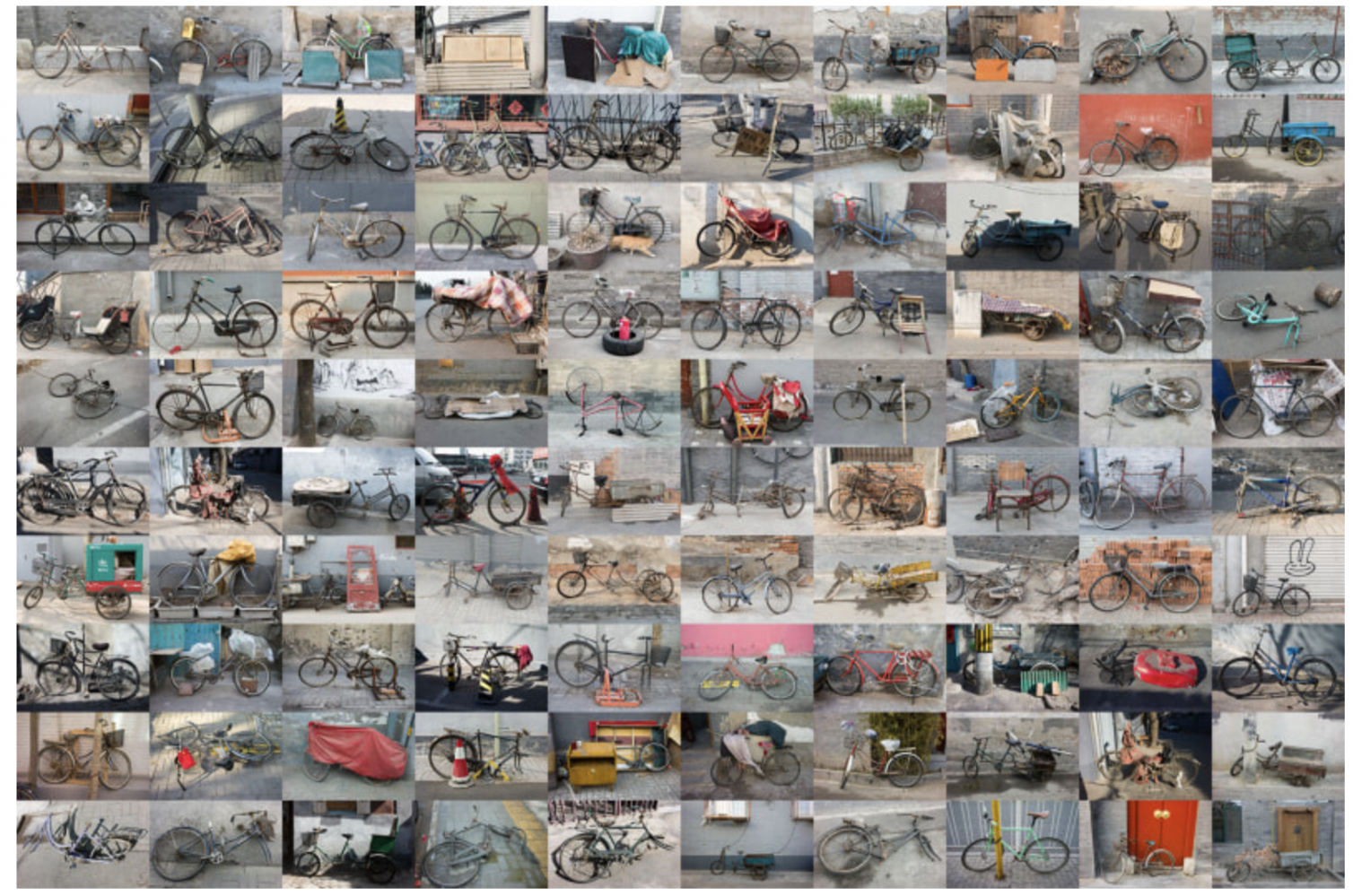
Taryn Simon – A Living Man Declared Dead and Other Chapters
The work was produced over a four-year period (2008–11), during which the artist travelled around the world researching and documenting bloodlines and their related stories. In each of the 18 “chapters” that make up the work, external forces of territory, power, circumstance, or religion collide with the internal forces of psychological and physical inheritance. The subjects Simon documents include victims of genocide in Bosnia, test rabbits infected with a lethal disease in Australia, the first woman to hijack an aircraft, and the living dead in India. Her collection is at once cohesive and arbitrary, mapping the relationships among chance, blood, and other components of fate.
Simon’s project is divided into 18 chapters, nine of which will be presented at MoMA. Each chapter comprises three segments: one of a large portrait series depicting bloodline members (portrait panel); a second featuring text (annotation panel); and a third containing photographic evidence (footnote panel).
A Living Man Declared Dead and Other Chapters I–XVIII exploits photography’s capacity to at once probe complex narratives in contemporary politics and organize this material according to classification processes characteristic of the archive, a system that connects identity, lineage, history, and memory. https://www.moma.org/calendar/exhibitions/1231

